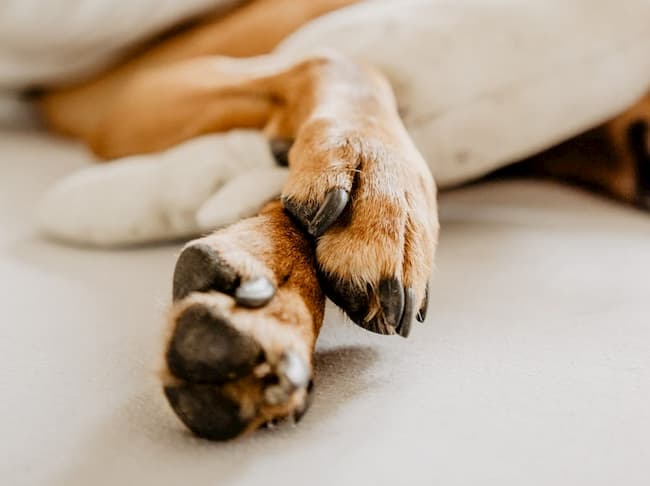
Pododermatitis is quite common in dogs. The term “pododermatitis” does not refer to a skin condition per se. It is a medical term used to define a group of inflammatory skin lesions localized at the distal extremity of the limbs in dogs and other animals.
Treatment can be done at home, but on the vet’s recommendations. Your veterinarian must determine the exact cause of your dog’s pododermatitis in order to prescribe appropriate therapy.
What are the Symptoms Of Pododermatitis?
The inflammation occurs in areas where the limbs come into contact with the ground. Basically, pododermatitis is found on a dog’s feet, in the space between the toes, paw pads, claws or the soft tissues around them.
Forelimbs are more commonly affected than hindlimbs, and some studies show that males have a higher incidence of these lesions than females.
Pododermatitis in dogs has a wide variety of causes. For this reason, symptoms vary from case to case. Nonetheless, the most common clinical signs you can see in a dog with pododermatitis, regardless of the cause, are:
- Itching;
- Redness of the skin between the toes and on the paw pads;
- Swelling;
- Dry and cracked skin;
- Skin lesions in the interdigital spaces and on the paw pads;
- Blisters with purulent or bloody contents;
- The affected claws can deform and fall out;
- The dog licks the affected area constantly and keeps its foot up;
- Thinning or hair loss;
- Lameness;
- Significant movement difficulties when several limbs are affected.
How to Prevent Pododermatitis
To prevent canine pododermatitis, you need to know what the predisposing factors are and take action.
There are several predisposing factors, but the most common are:
- The size of your pet – obese dogs;
- Paw conformation – dogs with flat paws and large interdigital spaces;
- Breed – Chow-Chow, Shar-pei, German Shepherd, English or French Bulldog, Great Dane, Mastiff, Basset Houd, Labrador Retriever, Golden Retriever, Beagle, or Dalmatian;
- Hygiene and care conditions – they significantly influence the frequency of inflammatory foot lesions;
- Frequent and long walks on hard, abrasive, or wet surfaces (moist soil or wet grass);
- Sleeping and resting on hard surfaces;
- Excessive exercise without sufficient rest periods.
How can you Prevent Pododermatitis?
Diet – Help your pet lose weight if it is obese. Overfeeding leads to unnecessary weight gain and puts excessive pressure on your dog’s feet.
Sleeping place – The place where your dog rests should not be too hard and abrasive. Provide your dog with a pet bed or, at least, put a softer layer between your dog and the floor.
Hygiene – Do not let your dog sleep or live in feces and urine. These promote the growth of bacteria and create an infectious environment in which your dog will live, making it prone to all kinds of infections, including pododermatitis.
Exercise – If you like to exercise or run your dog, give it a break once in a while. It helps your pet rest its feet and paws, not only its muscles.
Boots – You can buy your pet special dog boots to use every time you go out for a run or when you walk it on moist soil or wet grass. They help protect the skin on the feet and paw pads.
How to Treat Pododermatitis
Consult your veterinarian if you notice your dog has red, swollen feet and paws, dry and cracked skin, or purulent or bloody blisters. They will recommend treatment depending on the cause. In addition to local antibiotics, disinfectants, and healing powders, your veterinarian may also recommend laser therapy.
Laser therapy will reduce pain, swelling, and inflammation in your dog’s feet and paws. And what’s best is that you can do it from the comfort of your own home. You don’t have to take your dog to the vet for every session.
